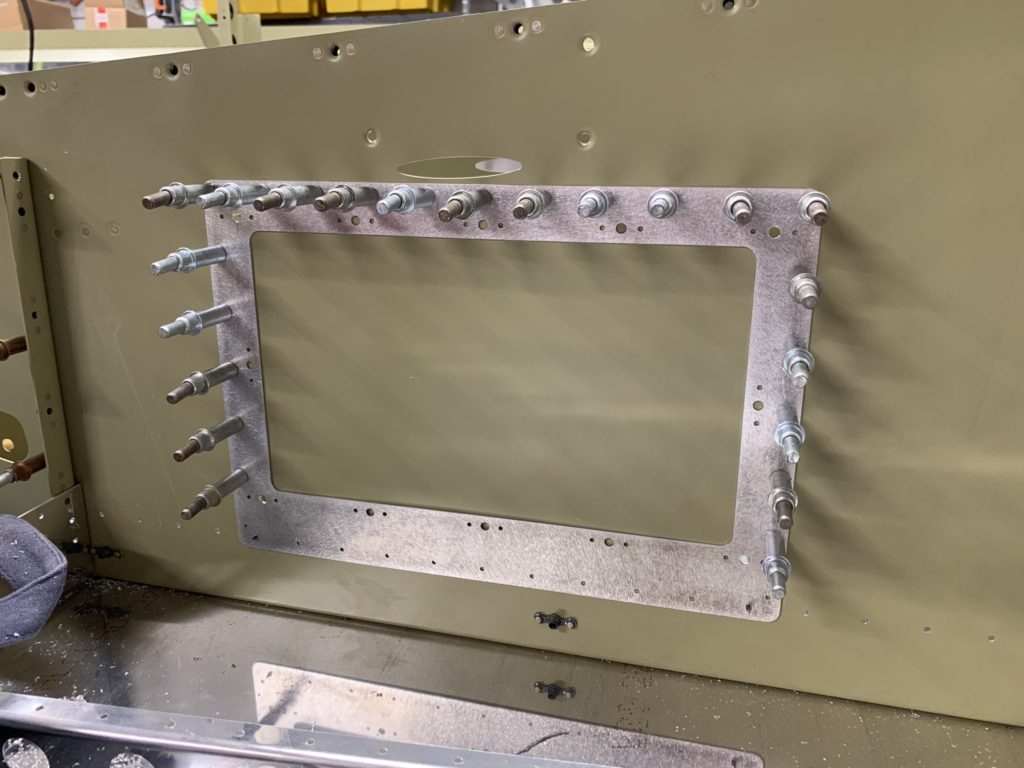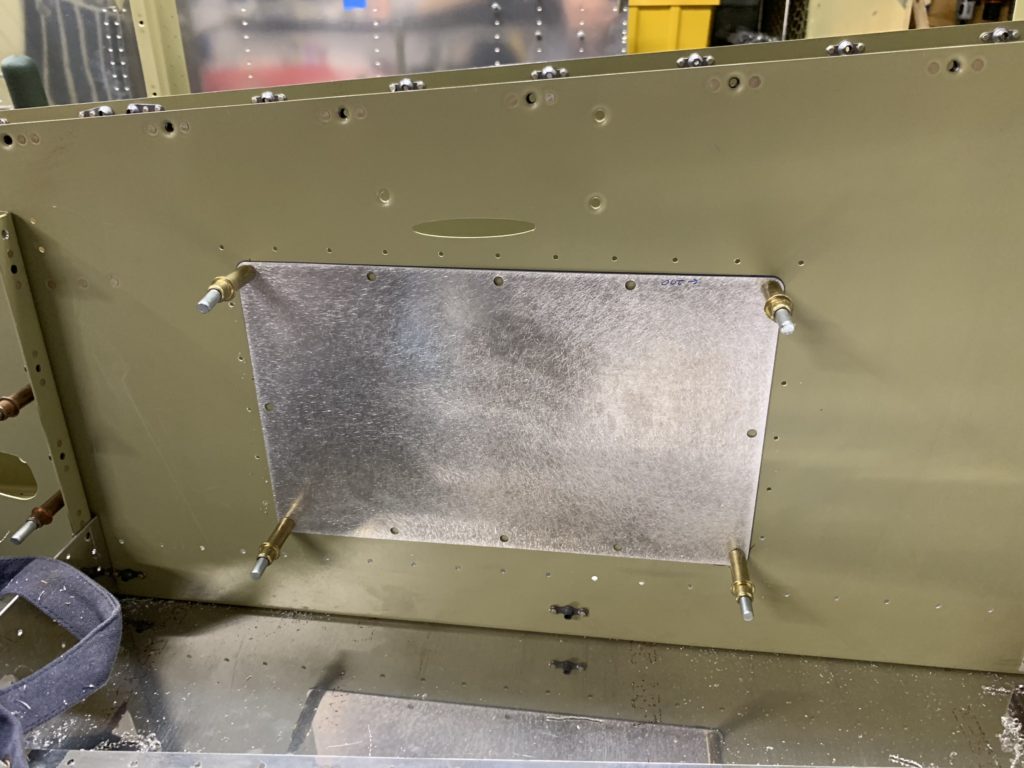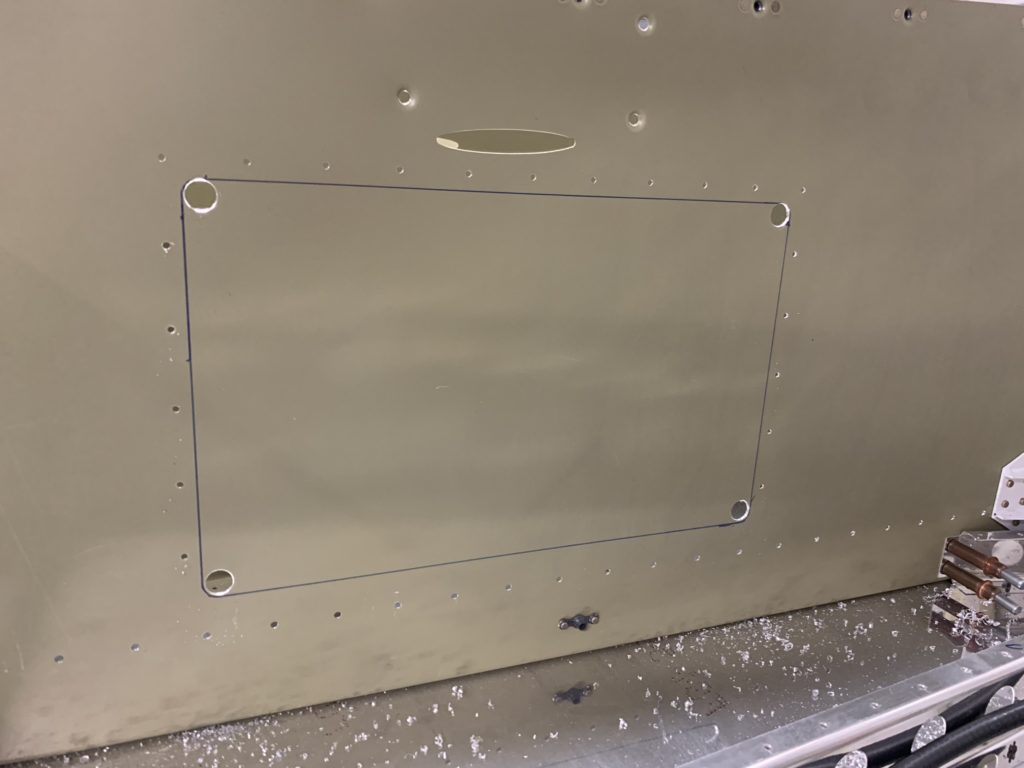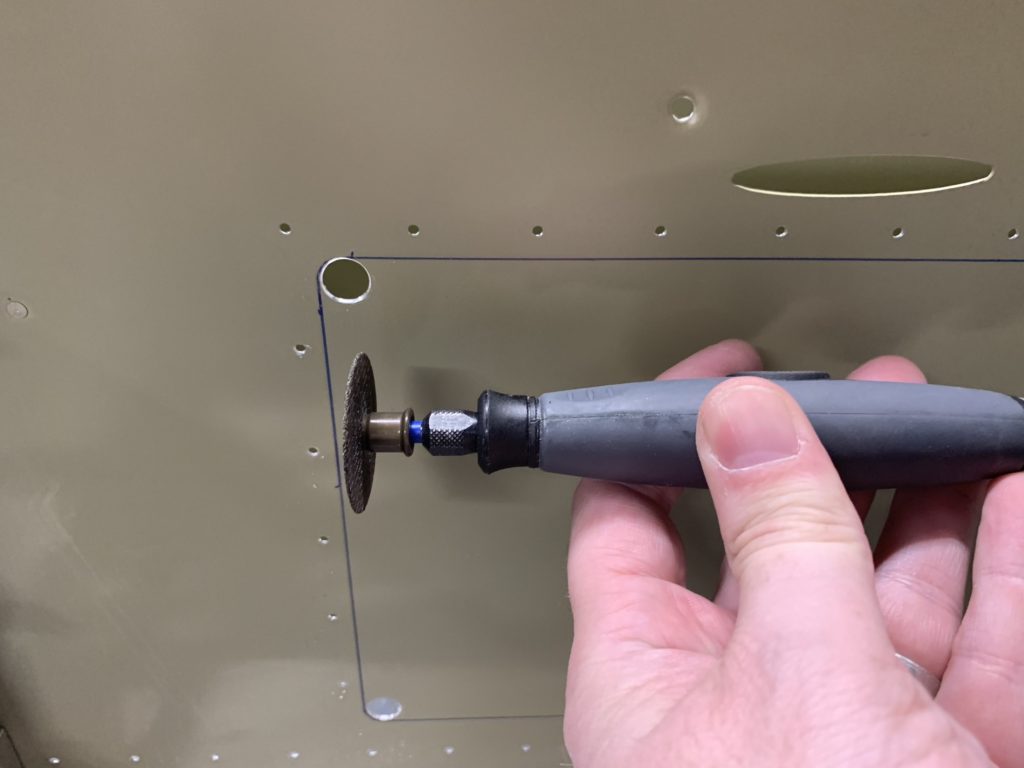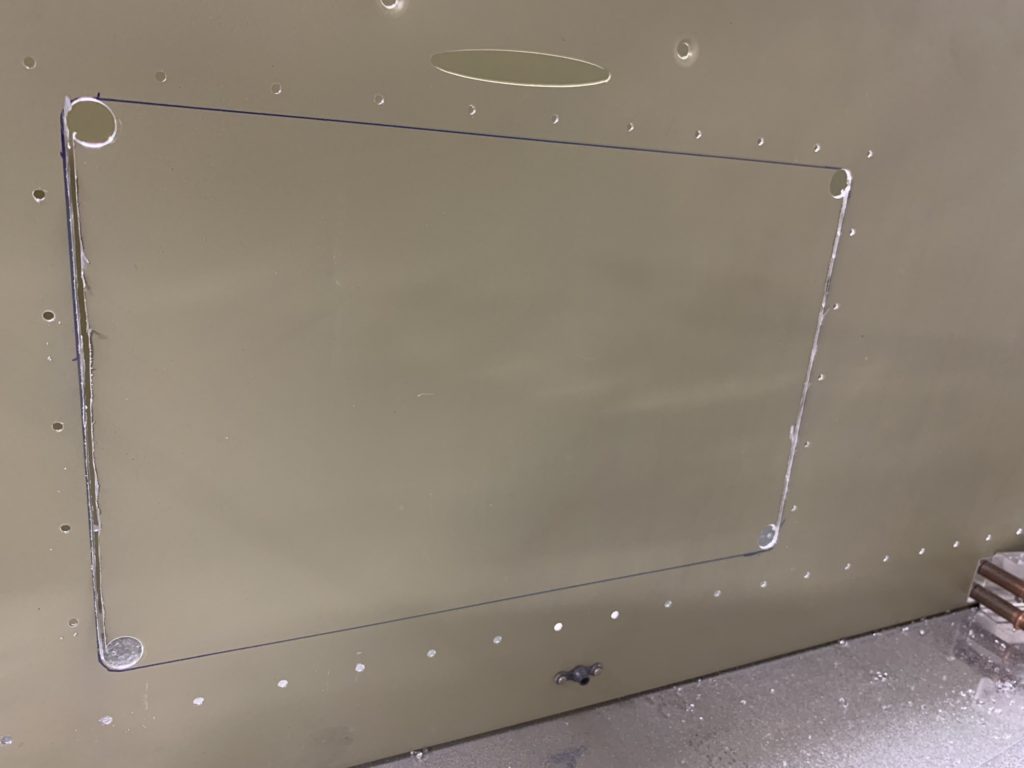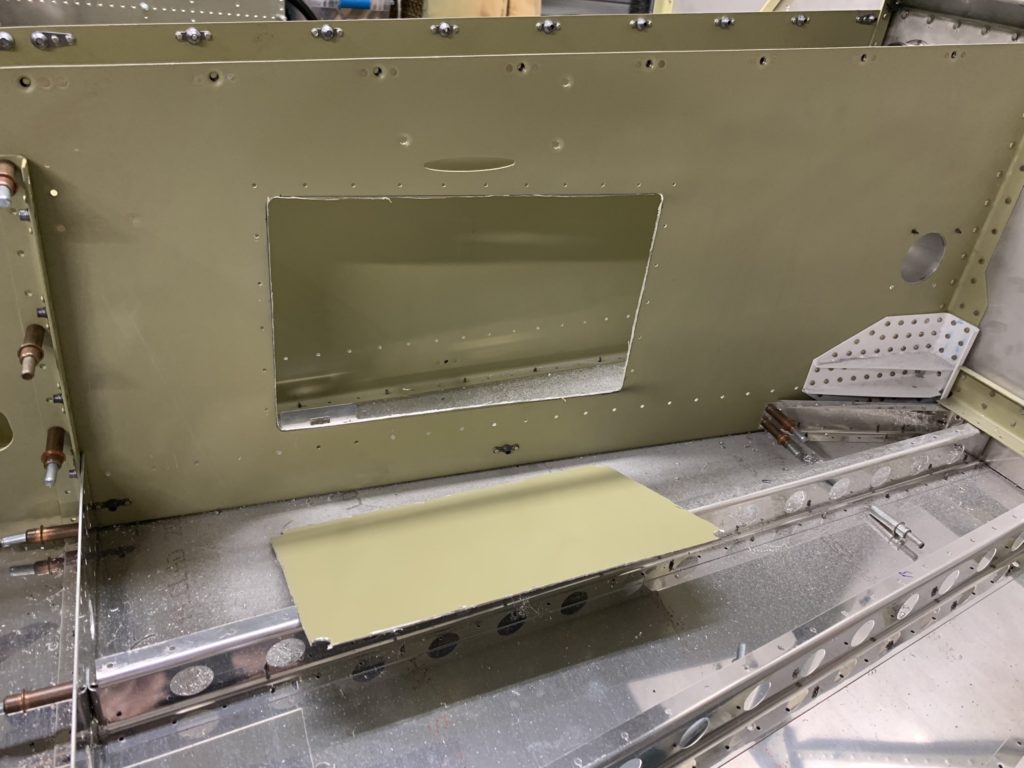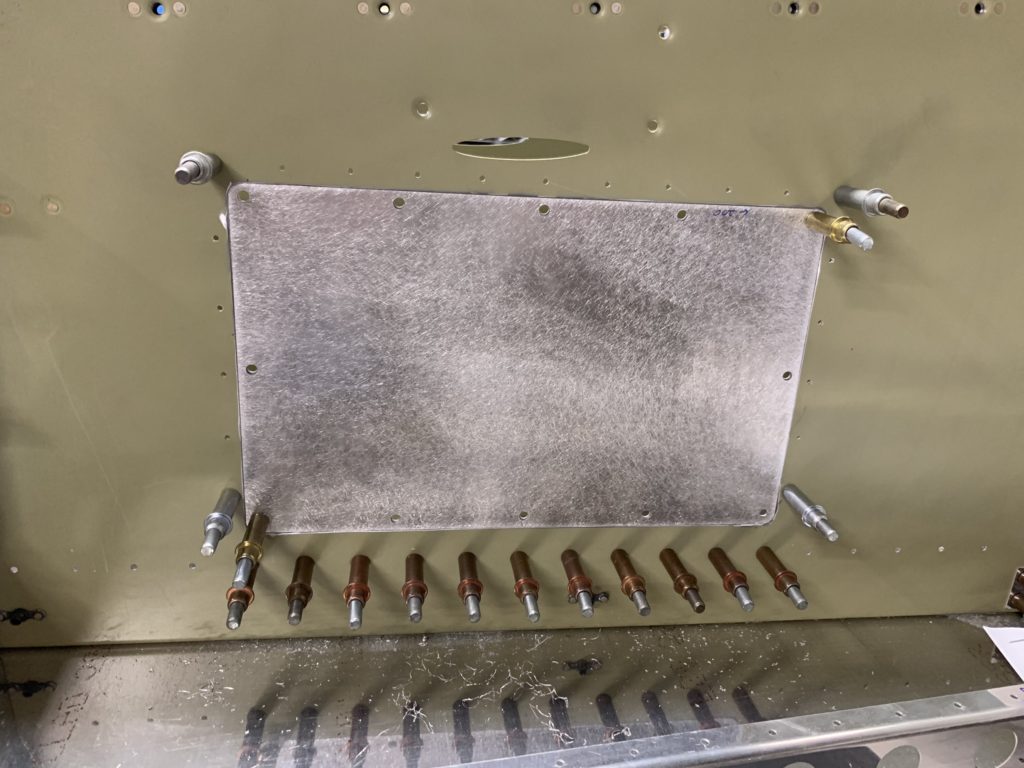With the next few steps in the plans having me rivet down the rear floor and seat panels, I realized that now was the time to install the Air Conditioner scoop. The kit for the AirFlow systems includes riv-nuts, however I have heard enough complaints regarding riv-nuts that I decided that since I have access I’m going to just install nutplates.
The first step is to mark the center line of the air scoop as well as the center line of the aircraft as you really want this to be perfectly centered. I spend a lot of time making a lot of measurements to try to make sure I get this correct. I’ll just say that the reflections from the skin and how I have my project sitting in my garage really did make this a difficult task as what I was seeing vs what my measurements were telling me did not agree.
I used making tape on the fuselage, a cardboard template I created from the scoop itself, as well as installing masking tape from down the length of the scoop to help me mark the centerline. I finally got to the point where I had to make the first hole in the skin. With the scoop clecoed to the skin, I drilled all screw holes and avoided drilling any of the spars.
Only after I did this did I read that someone used a sheet of acrylic to template the scoop so they could see where they were drilling. That was very smart and I wish I thought of it. Something to remember in the future I guess.
With all of the holes drilled, I used my nutplate jig to drill all the #40 holes for the nutplates. I then had to enlist my daughters to help me dimple the holes using the close quaters dimple tool. This is the dimple set that has a hole in the center and copper rods and nails to set the dimple.
Pro-tip: I found that the Stainless Finishing nails from Home depot were perfect vs the nails included in the tool. I ended up ruining a set when I pulled a nail though the dimple dies and had to get a replacement set.
With all the holes dimpled, I had my wife assist with back riveting the nutplates. After installing the scoop to make sure everything looked good, I needed to drill the holes for the radiator (condenser) into the center tunnel. This made a template and drilled the holes into the center tunnel. The instructions don’t tell you that you need to put a doubler around these holes, but I’m thinking that installing one may be a good idea. It’s on my list of things to do “later”
With the scoop installed, I putting the AC stuff off to the side until I get the baggage bulkhead installed At least I can store the scoop on the bottom of the plane for now so it’s out of my way.






